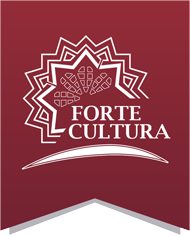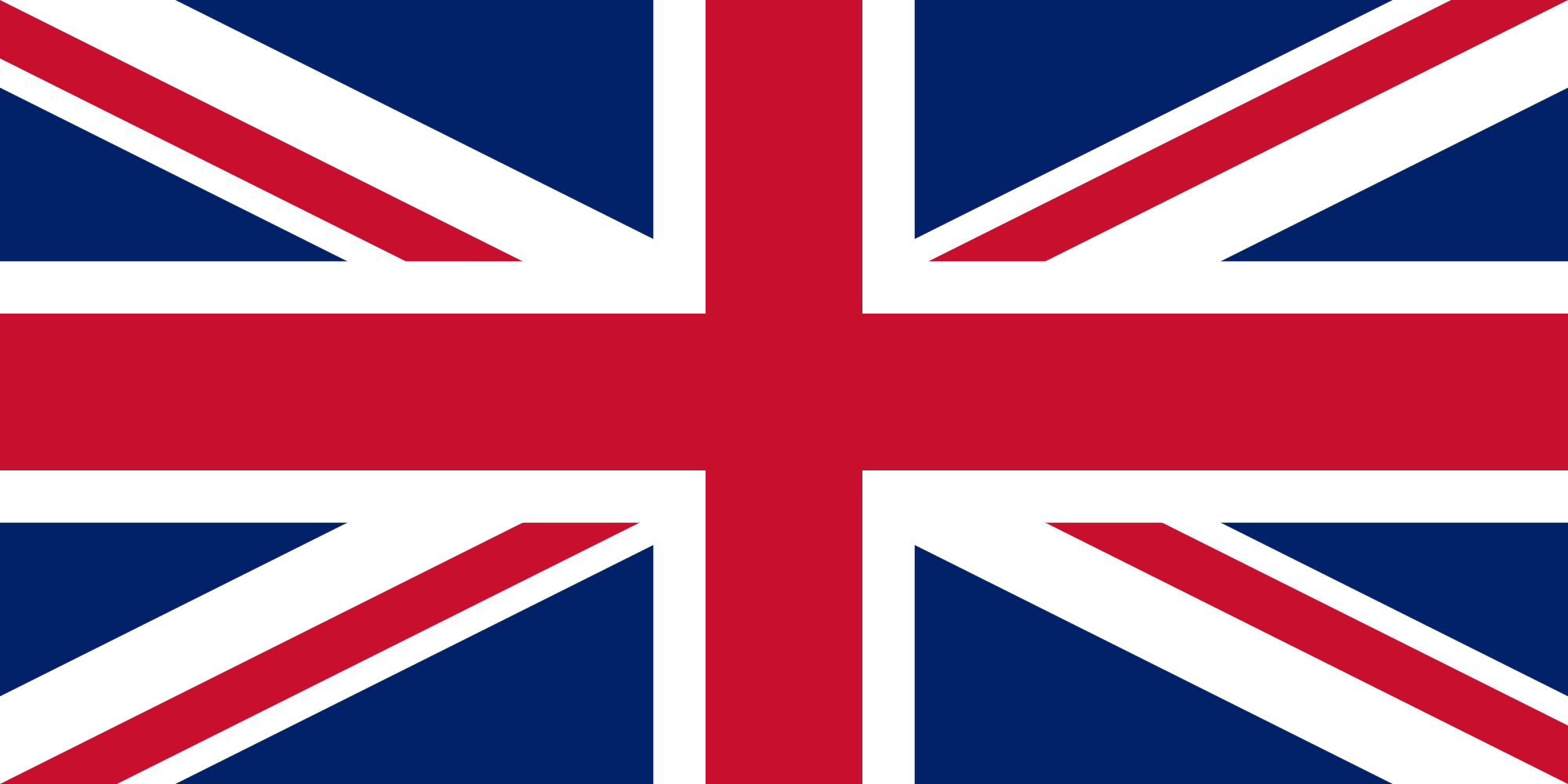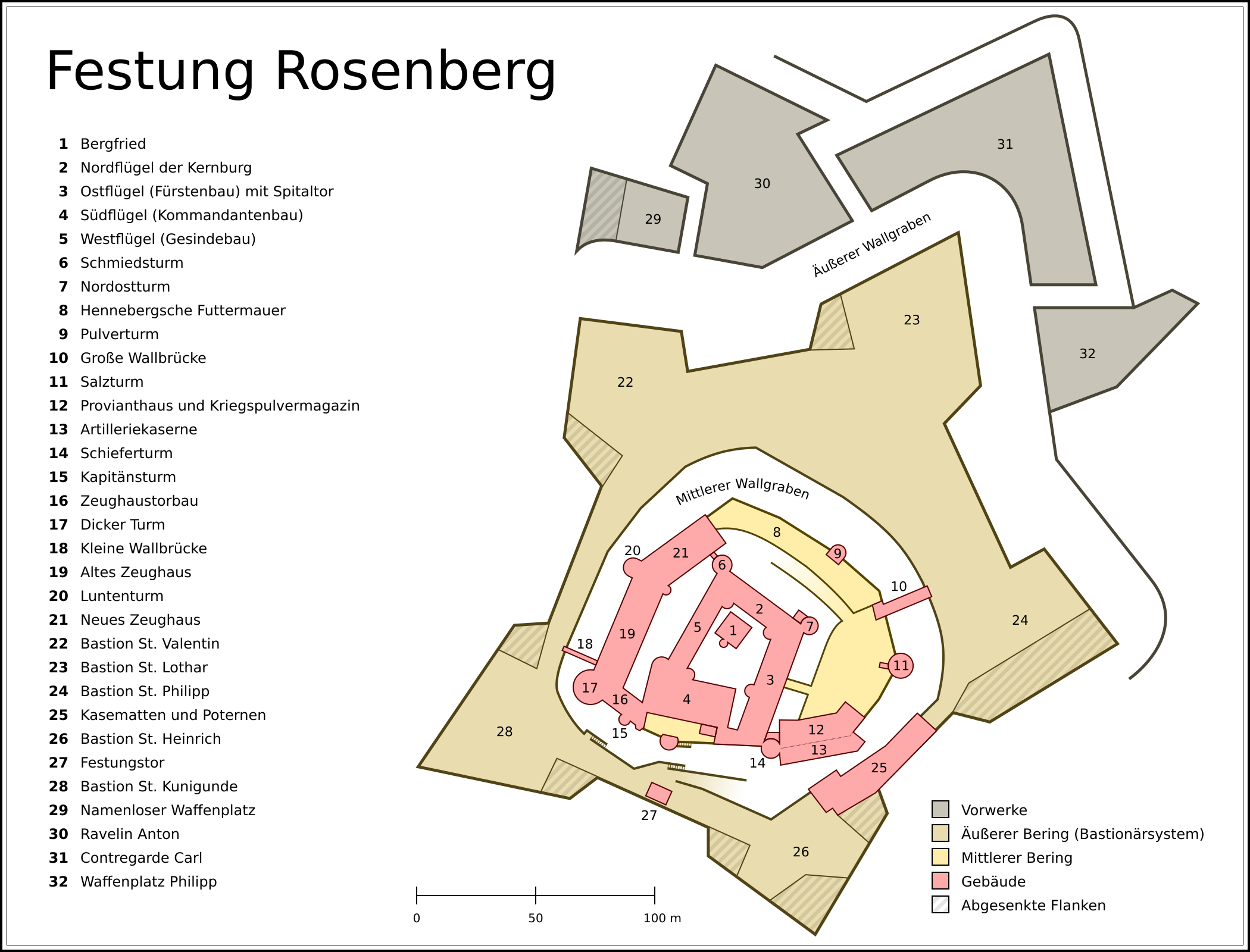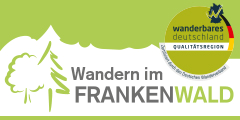Contact
Festung 1
Phone: +49 (0)9261 60410
E-Mail
Webseite
FORTE CULTURA® Travel Recommendations
Experience World
Early Baroque fortified gate
Who wants to conquer fortress Rosenberg first stands in front of the impressive Early Baroque gate which belongs to the most beautiful fortified gates in Germany with its opulent decorative elements. It was designed by Antonio Petrini, a Franconian architect with Italian roots, who also codeveloped the citadel Petersberg in Erfurt (Peter gate) and the citadel Mainz.
Core Castle
The outer design of this versatile Kernburg was changed by Baroque architect Baltasar Neumann between 1730 and 1733. The castle keep originates from the 13th century, the remaining buildings from the 14th and 15th century. The only entrance to the castle core was the spital gate of the prince building, the east wing of the facility.
Commander Building
The south wing of the Kernburg accommodated originally the castle chapel, but was redesigned in the 18th century to Baroque barracks. Today the representative rooms of the Franconian Gallery invite to enjoy the works of Lucas Cranach, Hans von Kulmbach and Tilmann Riemenschneider.
Outer Ring
The five bastions St.Kunigunde (I), St.Valentin (II), St.Lothar (III), St.Philipp (IV) und St.Heinrich (V) build the mighty outer ring of the fortification system from the mid-17th century. Every bastion is equipped with an bowfront formed guardhouse. The south bastions are named by the Franconian emperor Heinrich II. and his wife, the three northers bastions by the prince-bishops involved in the development. The bastion St. Heinrich serves as stage for the Rosenberg festivals in summer.
Middle Ring
The building complex of the middle fortification ring consists of the armoury gate building, old and new armoury, the victual house, the gunpowder room and the defensive walls with a total of seven towers and originates mainly from the late 15th century. At the beginning of the 18th Century an additional artillery barrack was developed. The big wall bridge connects the middle with the outer bastion fortification ring.
Outwork of fortress Rosenberg
The outworks of fortress Rosenberg are aligned to the north-east and consist of a unnamed military training area, the ravelin Anton, the Contregarde Carl and the military training are Philipp.„Crana Historica - Festival of History“ .
Image Film - City of Kronach
Tour Offers and Information
Fortress Tour
Casemate Tour
Kitchen, fragrance and stealth
Active Fortress! - Nordic Walking meets history
Kronach sandstone workshop
Map
Monument and History
History Already during the Bronze Age, the three-river-city Kronach in the Franconian forest was situated at important trade routes, i.e. the wood export from the Franconian forest to Amsterdam. Under the reign of the Bamberg prince-bishops a castle high on top of the Rosenberg was built to protect the city and as a residence. It was developed to a mighty land fortification from the 15th century and was never conquered by enemies.Napoleon Bonaparte stopped in Kronach. He gave the attack command here against Prussia in 1806. During the World War I captain Charles de Gaulle interned on the fortress. He fled two times via the high fortress walls.
Quelle: www.uffizi.it Quelle: museum-geschichte-in-miniaturen-teil Quelle: © EpochTimes
Architecture The fortress Rosenberg gained an outstanding meaning in the German fortification architecture by medieval elements, the royal splendour and the defence architecture of the Renaissance the Baroque which are presented side by side.Johann Maximilian von Welsch contributed as much as his colleague Balthasar Neumann.
Quelle: Eccofort DR
Quelle: Eccofort DR Quelle: Eccofort Quelle: ©Stadt Kronach, Stefan Wicklein (18)
Nature Experience A big fortification park with the Kronach fortress forest indluding nature track, different hiking tracks and nordic walking tracks make the fortress Rosenberg to a special nature experience. A carriage ride in the Southern Franconian forest, a hike to the summer toboggan run or a raft on the wild or “tame” Rodach offer an interesting experience offer for adults and kids.
Quelle: Eccofort DR Quelle: © Stefan-Wicklein Quelle: ©Ulrich Dautel Quelle: Stadt Kronach
Partner






